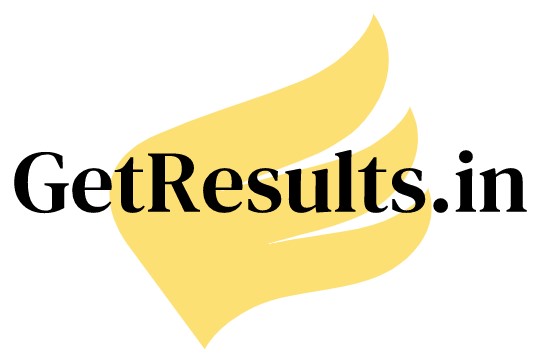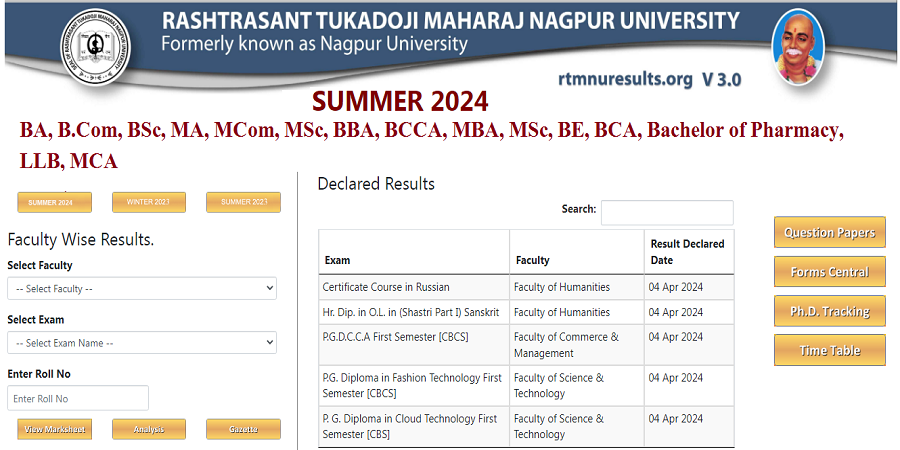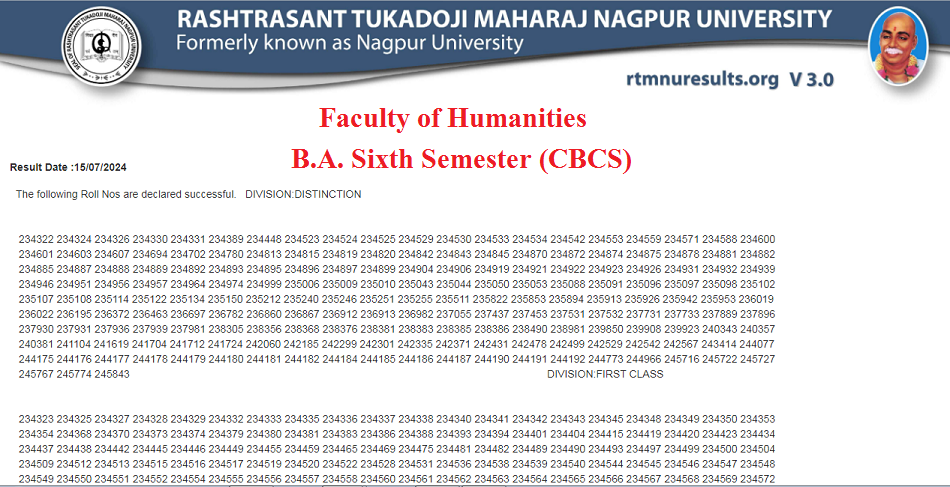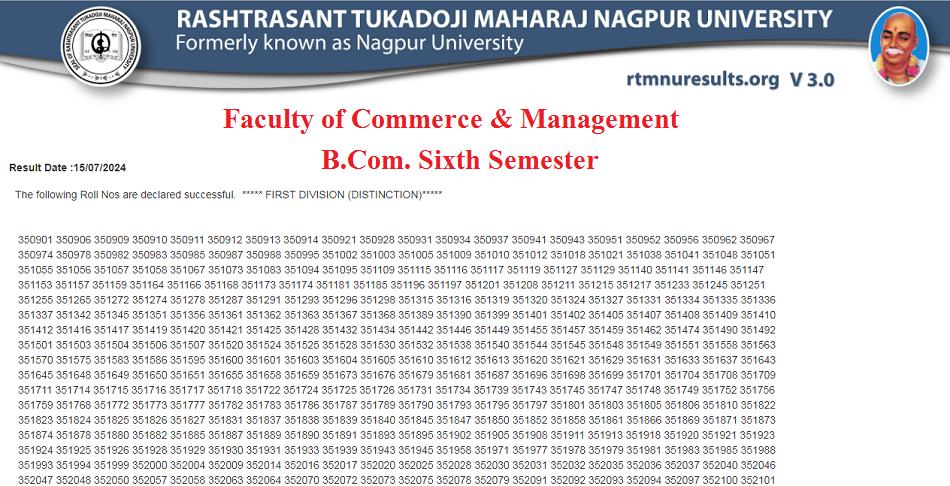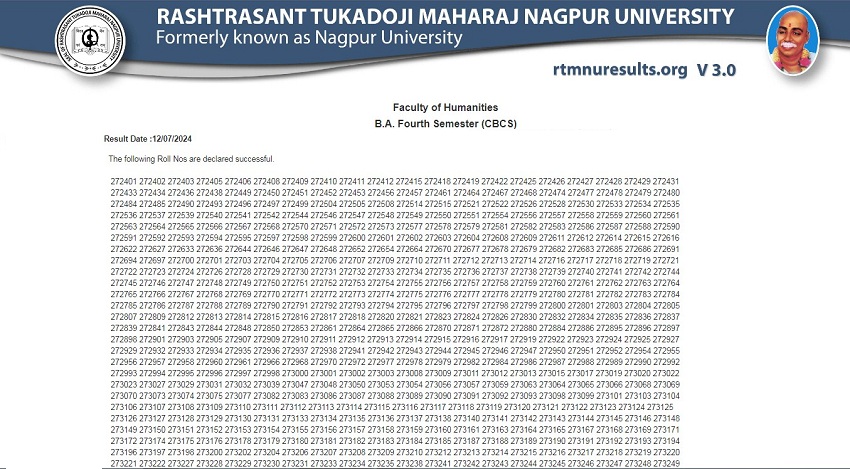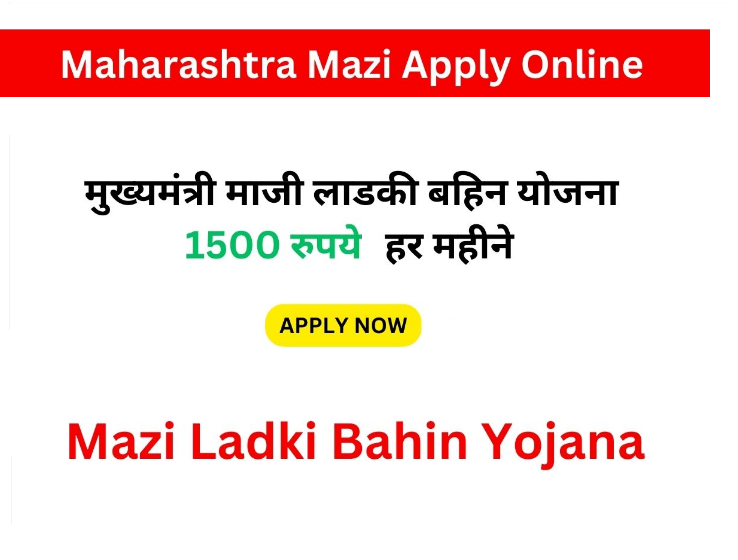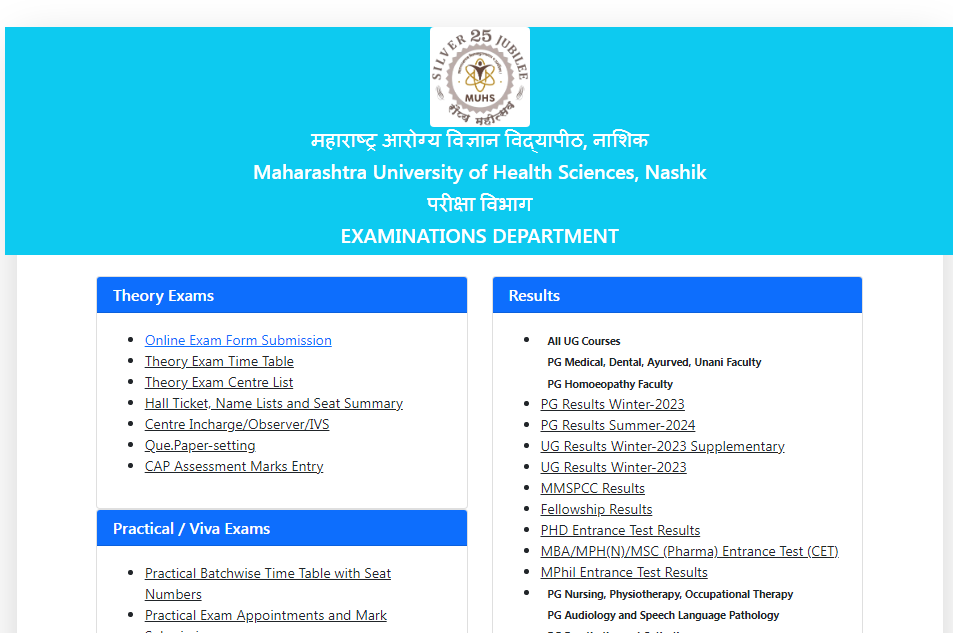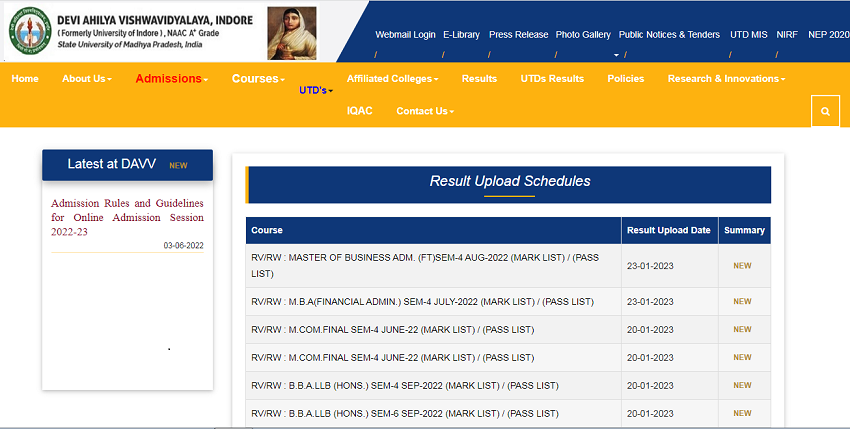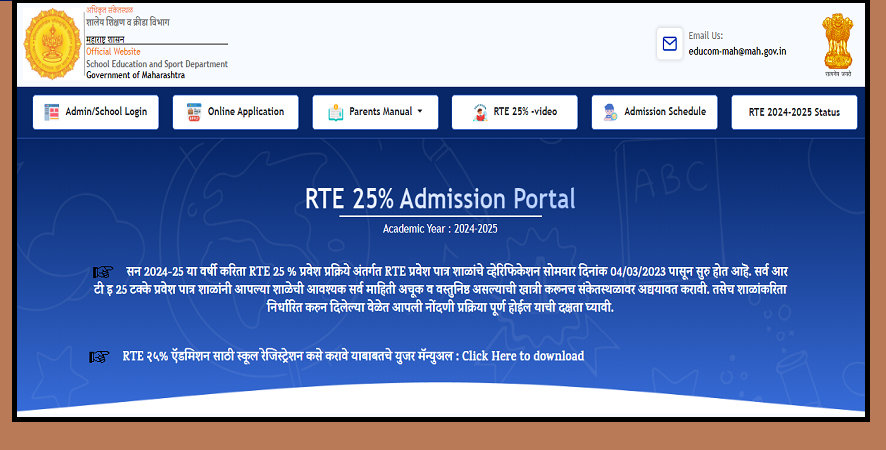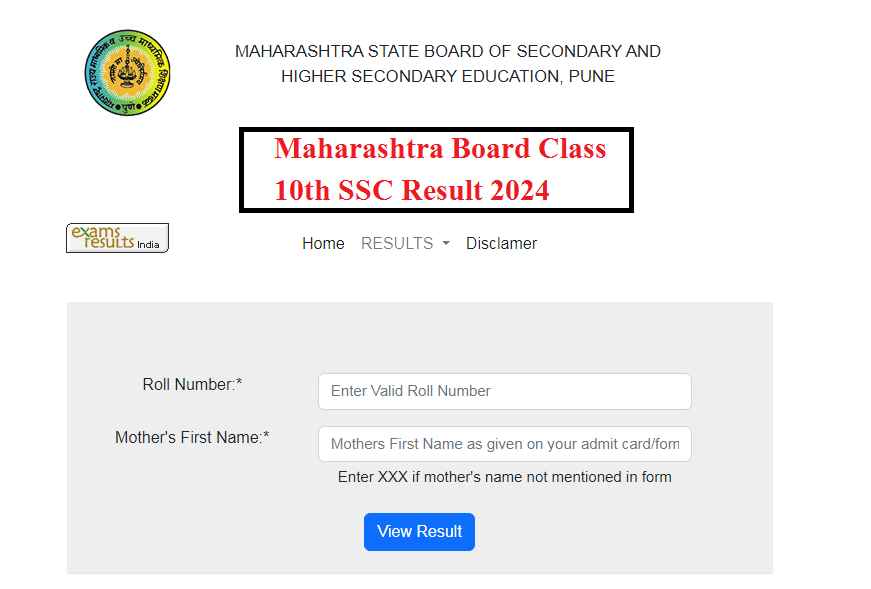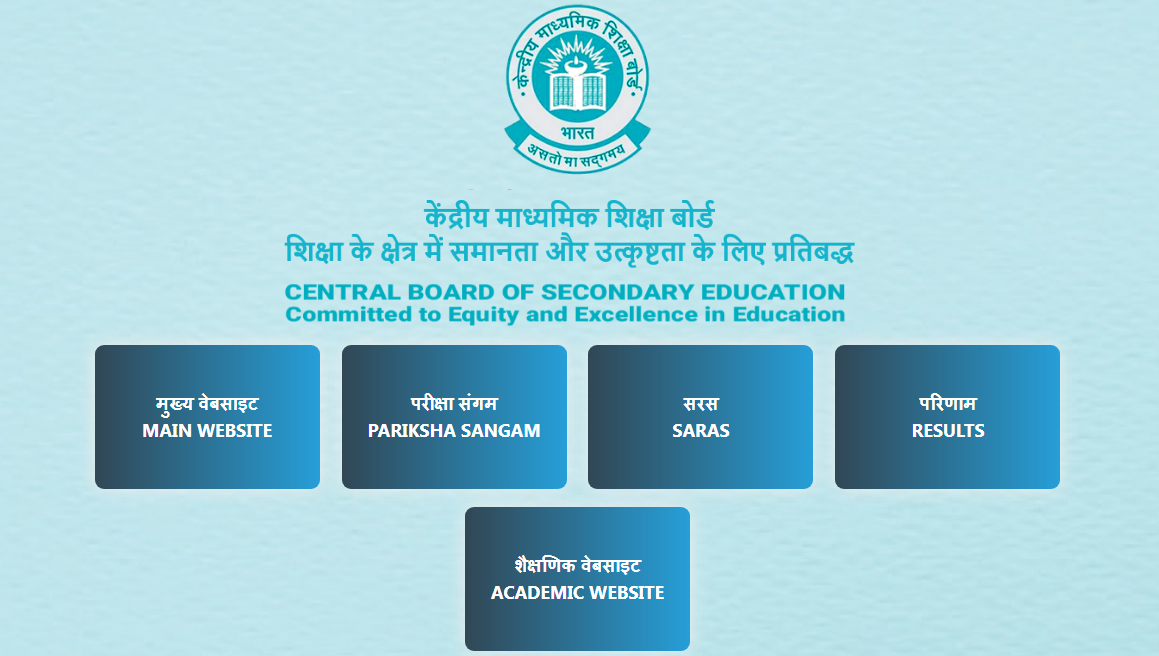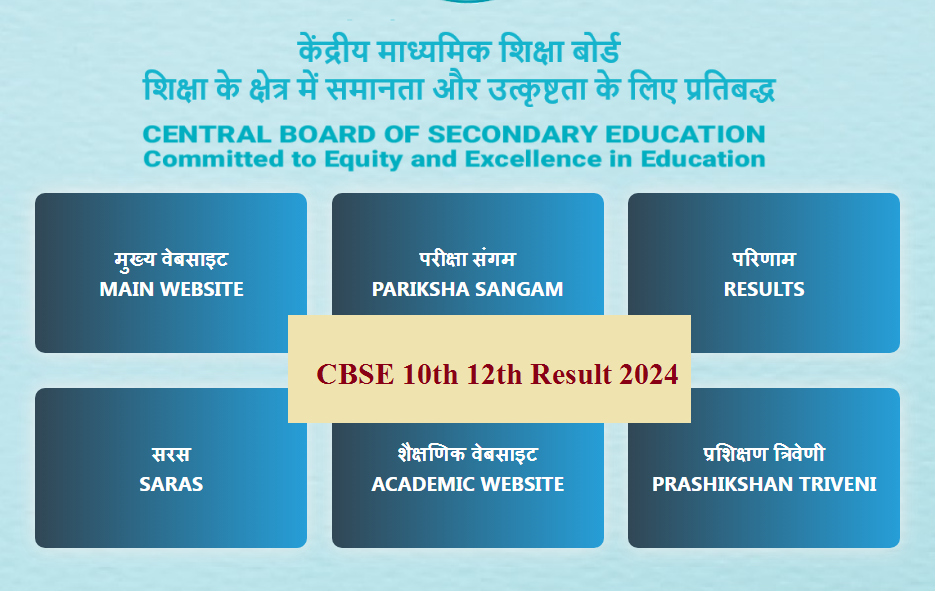SGBAU Revised B.Tech Sem 1 Syllabus 2021
SGBAU Revised B.Tech Sem 1 Syllabus 2021
SGBAU Revised B.Tech Sem 1 Syllabus 2021|Amravati University B.Tech Syllabus Part 1| SGBAU First Year B.Tech Syllabus
Amravati University New Syllabus 2021 is available for Downloading. The latest SGBAU Revised B.Tech Sem 1 Syllabus 2021 is published by Amravati University. The students looking for this syllabus can Download the PDF Syllabus from given respective Links. We keep adding More details about this Syllabus on this page. We given below the Details updated new syllabus. Students of SGBAU are requested to go though the detail syllabus. You can also download the PDF of syllabus from given link. For More updates keep visiting us.
SGB Amravati University Revised B.Tech Chemical Technology Sem 1 Syllabus 2021 -SGB Amravati University B.Tech Chemical Technology First Semester New Revised Syllabus is given below for Downloading. The students can Download the respective Syllabus from following given details. Just go through the given links & read the given syllabus carefully. Amravati University First Year New Semester Online Detail syllabus given below.
SGBAU Revised B.Tech Sem 1 Syllabus 2021
SANT GADGE BABA AMRAVATI UNIVERSITY
SYLLABUS PRESCRIBED FOR FOUR YEAR DEGREE COURSE IN
BACHLOR OF TECHNOLOGY (CHEMICAL TECHNOLOGY)
(FOOD, PULP & PAPER, OIL & PAINT AND PETROCHEMICAL TECH.,)
SEMESTER PATTERN CREDIT GRADE SYSTEM
SEMESTER : FIRST
APPLIED INORGANIC CHEMISTRY
Aim :
To impart a sound knowledge on the principles of inorganic chemistry involving the different application oriented topics required for Food, Petro, Pulp and Paper, Oil and Paint Technological branches.
Objectives :
The student should be conversant with :
– Concept of atomic structure, related various theories and principles.
– Knowledge with respect to water and various treatments of water.
– Utilization of engineering materials towards different applications.
– The principles involved in corrosion control.
SECTION-A
UNIT I :
Atomic structure : Bohr’s theory, Modern quantum theory of atom, deBroglie’s equation, Exclusion
Principle, Hunds rule, Aufbau principle, quantum number and distribution of electrons. Atomic size, ionization energy, factors determining ionization energy, electron affinity and electro negativity.
UNIT II:
Chemical Bonds and their types : ionic bond, covalent bond, metallic bond. Hydrogen bond, coordinate
bond, odd electron bond, vanderwaals forces, lattice energy, Born Haber cycle, hybridization and molecular shapes,
resonance.
UNIT III:
Water : Impurities in water and their effect on hardness, Estimation of hardness by EDTA and Soap solution method, softening of water, methods of softening : Lime Soda, Zeolite process and Ion Exchange method,
problems based on Lime Soda & Zeolite process, industrial uses, boiler corrosion structure of water, concept of bond
and free water.
SECTION-B
UNIT IV:
Alloys: Introduction, purpose of making alloys, composition, properties, different types of alloys, carbon steel, copper ( Brass, Bronze) , Nickel, Aluminum, Tin.
UNIT V:
Corrosion: Definition, factors affecting the rate of corrosion, different types of corrosion, cathodic
and anodic prote prevention against corrosion, protective coating, metallic, inorganic, organic coating and
corrosion inhibitors.
UNIT VI:
Cement: Raw materials, compositions, manufacture, by wet and dry process , properties of cement, special
cements.
Glass: Different kinds of glass, manufacture of glass color imparting on glass uses of glass.
Refractories: Classification, raw materials, manufactures, application in industry.
Text Book:
Chemical Process Industries: R.N.Shreve, McGraw Hill, New York.
Reference Books:
1. Fundamental Concepts of Inorganic Chemistry: E.S.Gilbreath, McGraw Hill Kogukusha ltd, Int. students Edn.
2. Concise Inorganic Chemistry, J.D. Lee, Low Price Ed.
3. A Textbook on Engineering Chemistry: S.S.Dara.
4. Outlines of Chemical Technology .E.Dryden, East-west press New Delhi.
5. Basic Inorganic Chemistry, F.A.Cotton ,G.Wilkinson and P.L.Gaus, John Wiley & Sons, Inc, Singapore 3rd Ed,1996.
APPLIED INORGANIC CHEMISTRY- LAB.
List of Experiments :
1. Determination of Normality and strength of Sodium hydroxide by Oxalic acid.
2. To determine the normality and strength of Hydrochloric acid by sodium hydroxide.
3. Determination of normality and strength of Oxalic acid by using potassium permanganate solution.
4. Determination of permanent NaOH and Na2CO3 in the given alkali mixture solution.
5. Determination of NaHCO3 and Na2CO3 in the given alkali mixture solution.
6. Determination of hardness of water by using EDTA method.
7. Determination of free chlorine in a water sample.
8. Estimation of copper iodometrically using hypo solution.
9. Estimation of Zinc in the given sample.
10. Estimation of Iron from the given solution.
11. To estimate amount of Tin in the given stannous chloride solution.
12. To estimate the percentage of lime in cement.
13. To determine the amount of copper in given sample of brass.
14. To estimate the percentage of iron in plain carbon steel.
NOTE : At le�st EIGHT laboratory experiments mentioned above have to be performed.
ENGINEERING PHYSICS
Course Objective :
To enable the students to correlate the theoretical principles of fundamentals of modern aspects in Physics with
application oriented studies of engineering.
Coruse Outcome:
At the end of the course the students would be exposed to fundamental, knowledge in:
– Electromagnetic phenomena and wave propagation.
– Interferometric techniques in metrology, communication.
– Application of quantum physics to optical & electrical phenomena.
– Application of lasers and Fiber Optics in Engineering and Technology.
– Conducting, superconducting and dielectric materials.
– Semi conducting and new engineering materials.
– Physics of Modern engineering materials.
– Application of ultrasonic’s, acoustics.
SECTION-A
Unit I:
Solid State Physics: Classification of solids on the basis of energy band diagram, Covalent bonds, bound & free electrons, holes, electron and hole mobilities, Intrinsic and Extrinsic semiconductors, energy band diagram for semiconductors. Fermi and Impurity levels, semi-conductor conductivity with derivation, Law of mass action (only
statement), P-N junction diode, Zener diode, Light Emitting Diode. Hall effect.
Unit II:
Modern Physics: Planck’s hypothesis, properties of Photons, Compton effect, De-Broglie’s concept of matter
waves, wave particle duality, Heisenberg’s Uncertainty Principle (only statement), applications of uncertainty principle (electrons cannot exists in the nucleus and binding energy of electron in atom), wave function and its significance, time independent Schrodinger equation.
Unit III :
Electric and Magnetic Fields : Motion of electron in uniform transverse electric field and transverse magnetic
fields, velocity selector (energy filter), positive rays, Bainbridge mass spectrograph, Cathode ray oscilloscope : block
diagram and working of each block.
SECTION-B
Unit IV:
Interference and Diffraction: Fundamental condition of interference, thin film interference due to reflected
light, Newton’s ring; equation for radius of bright and dark rings, determination of wavelength, R. I. of medium using Newton’s ring. Fresnel and Fraunhoffer class of diffraction, single slit diffraction, plane transmission grating;
construction and determination of wavelength of light using grating, dispersive power of grating.
Unit V:
Fibre Optics and LASER: Principle and construction of optical fibre, acceptance angle and acceptance cone
numerical aperture, types of optical fibres and refractive index profile, attenuation in optical fibres, different
mechanisms of attenuation, application of optical fibres.; LASER: spontaneous and stimulated emission of radiation,
Pumping, Optical Pumping, Ruby LASER (Construction and Working), Characteristics & Applications of Laser in
Industrial, Medical and Scientific field.
Unit VI:
Acoustics: Sound waves, reflection of sound waves, defects due to reflected sound (echo and reverberation),
absorption of sound, Sabine’s formula for reverberation of time, Factors affecting architectural acoustics and its
remedies. Ultrasonics: Ultrasonic waves, Production of Ultrasonic waves (piezo-electric and magnetostriction
methods), properties of Ultrasonic waves and applications. Fluid dynamics: Viscosity, Stoke’s law, liquid flow
(streamline and turbulent), flow of liquids through a capillary tube (Poiseuille’s equation), Continuity equation,
Bernoulli’s theorem (only derivation).
Text Books:
1) M.N. Avadhanulu & P. G. Kshirsagar: Engineering Physics, S. Chand Pub., 2008
2) Dr. (Mrs.) S. D. Wakde & J. S. Bakare: Engineering Physics, SSGMCOE, 2004
Reference Books:
1) R. K. Gaur & S. L. Gupta: Engineering Physics, Dhanpat Rai & Sons.
2) Hitendra K. Malik & A. K. Singh: Engineering Physics, Tata McGraw Hill
3) Beiser: Mordern Physics, Tata McGraw Hill
4) Mani & Mehta: Mordern Physics, Affiliated East- West Press
5) N. Subrahmanyam, Brijlal, M. N. Avadhanulu: A Text Book of Optics, S. Chand & Company.
ENGINEERING PHYSICS= Lab.
Practicals :
1) Determination of Band gap energy of semiconductor.
2) To study the forward and reverse characteristics of P-N junction diode.
3) To study the reverse characteristics of Zener diode.
4) To study the forward characteristics of Light Emitting Diode.
5) To determine the wavelength of monochromatic light by Newton’s Rings method.
6) Determination of wavelength of spectral lines using diffraction grating.
7) Determination of grating element of a diffraction grating using LASER beam.
8) Study of Hall Effect
9) Amplitude and frequency measurement of ac signal using CRO
10) Study of CRO
11) Determination of unknown frequency of ac signal using Lissajious spattern
12) To determine resolving power of telescope
13) Determination of Planck’s constant using photocell
14) To determine the coefficient of viscosity of water by capillary flow.
15) To determine the specific charge (e/m) of electron by Thomson method.
16) Experiment on the basis of Non Destructive Testing.
(Note: Minimum 08 experiments shall be conducted)
SGBAU Revised B.Tech Sem 1 Syllabus 2021
ENGINEERING MATHEMATICS – I
Aim :
The aim of this course is to familiarize the prospective engineers with techniques in differential calculus and equations. It aims to equip the students with standard concepts and tools at an intermediate to advanced level that will serve them well towards tackling more advanced level of mathematics and applications that they would find useful in their disciplines.
Objectives:
1. To identify algebraic problems from practical areas and obtain the solutions in certain cases
2 . To understand maxima and minima concept.
3 . To solve differential equations of certain types, including systems of differential equations that they might
encounter in the same or higher semesters.
Course Outcomes:
On completion of the course the students will learn to:
– Able to understand Rolle’s Theorem and its applications to Engeering Problems.
– Able to understand maxima minima concept.
– Able to apply Demoiver’s theorem in various concepts of complex number.
– Able to solve differential equations of certain types that they might encounter in the same or higher semester.
SECTION – A
Unit I : Differential Calculus :
Successive Differentiation, Leibnitz’s Theorem, Rolle’s Theorem, Mean value theorem, Expansions of function using
Taylor’s and Maclaurin’s theorems; Indeterminate Forms Using L’Hospital Rule.
Unit II: Multivariable Differential Calculus :
Partial differentiation, total differential coefficients, exact differential, Euler’s theorem on homogeneous function,
Maxima & Minima of a function of several connected independent variables (Lagrange’s multipliers).
Unit III : Complex Numbers :
Demoiver’s theorem and its applications, Hyperbolic and inverse hyperbolic functions, separation of real and
imaginary parts, Logarithm of complex numbers.
SECTION B
Unit IV: – First order and First Degree Ordinary Differential Euations :
Ordinary differential equations of first order and first degree in various Forms, (Variable separable, linear differential equation, homogeneous differential, exact differential equation) and reducible to above forms, methods of substitution.
Unit V : First order and Higher Degree Ordinary Differential Euations :
Solution of differential equation of first order and higher degree by various methods.
Applications of Ordinary Differential Euations :
Applications of differential equations of first order and first degree to the problems on orthogonal trajectories and
Electrical engineering.
Unit VI :Se uences and Series
Convergence of Sequence and Series, Test for Convergence, Comparison Test, Ratio Test, Root Test, Raabe’s Test,
Range of Convergence.
Text / Reference Books :
i ) Wartikar P.N . Wartikar J.N. – A text of applied Mathematics, Volume I, II, Pune V.G. Prakashan, Pune.
ii) Grewal B. S. – Higher Engineering Mathematics, ( latest Edition), Khanna Publishers .
iii) Kreyszig E.K. – Advanced engineering Mathematics, John Wiley.
iv) Ramana B. V. – Higher Engineering Mathematics, (TMH).
v) Singh R.R. And Bhatt M. – Higher Engineering Mathematics, ( TMH).
vi) N.P.Bali and Manish Goyal – A text book of Engineering Mathematics, Laxmi Publications.
vii) Veerarajan T. Engineering mathematics for first year,( TMH).
SGBAU Revised B.Tech Sem 1 Syllabus 2021
COMPUTER PROGRAMMING
Aim:
The course is aimed at impart knowledge to analyze, solve, design and code real-life problems using C language
Course Outcomes: At the end of course, the students will be able –
To explain fundamental concepts of computer and computing.
To test and execute the programs and correct syntax and logical errors.
To implement conditional branching, iteration and recursion.
To use arrays, pointers and structures to formulate algorithms and programs.
To recognize various problem solving techniques and computer applications.
To apply programming concepts to solve real life problems.
UNIT I: Fundamental of the Computer and Computing Concepts :
Generation of computers, Classification of computers, Basic Anatomy of Computer System, Input Devices, Processor, Output Devices, Memory Management, Types of Computer Software, Overview of Operating system, Networking Concepts, Microsoft Office, Number systems: Decimal, Binary, Hexadecimal, Octal, Conversion of Numbers, Binary Arithmetic Operations, Programming Languages, Logic gates
UNIT II: C Fundamentals :
Introduction, Importance of C, Basic Structure of C Programs, Program execution, Basic
programs based on C such as Printing Message, Adding two numbers, Interest calculations, Use of subroutines, math
function. C tokens, Keywords and Identifiers, Character set, Data Types, Constant and Variables, Declaration of
Variables, Declaration of Storage Class
UNIT III: Operators, Expression and Input-Output operation :
Operators, Types of Operators: Arithmetic, Relational, Logical, Assignment, Increment-decrement, Conditional, Bitwise, Special. Arithmetic expression, Evaluation of Expression, Precedence of Arithmetic Operators, Input-Output Operation: Reading and Writing Character, Formatted Input, Formatted Output.
UNIT IV: C Control constructs :
Decision-making using if, if-else, nested if, else if ladder and switch-case statements, ?: Operator, Goto Statement, Loops using for, while, do-while statements, break and continue statements, Jumps in Loops, Concise Test Expressions.
UNIT V: Array, Strings and Structures:
Introduction to array, One Dimensional Array: Declaration & Initialization, Two Dimensional: Declaration & Initialization, Multi Dimensional, Strings: Declaration and Initialization, Reading String from terminal, Writing String to Screen, Putting Strings together, Comparison of Two Strings, String-Handling Functions, Table of Strings, Other features of String, Structures – Define, Declaration, Accessing the members of a
structure
UNIT VI: User Defined Functions, Pointers and File Management :
Functions, Need for User defined Functions, Multi Function Program, Elements of User Defined Functions, Return Values and their types, Function Calls, Function Declaration, and Categories of Functions. Definition and uses of pointers, Accessing the address of a variable, Introduction to File Management, Defining and Opening File, Closing File, Input/output Operations on File.
Text Book:
E Balagurusamy: Computing Fundamentals & C Programming – Tata McGraw-Hill, 2nd Edition .
Reference Books:
1. Pradeep Dey and Manas Ghosh, “ Computer Fundamentals & Programming in C” Oxford University Press, 2006.
2. K R Venugopal and S R Prasad,“Mastering C” Tata-McGraw Hill.
3. Seymour Lipschutz, “Data Structure Using C”, Tata-McGraw Hill.
4. Herbert Schildt – C Complete Reference (Tata-McGraw Hill).
COMPUTER PROGRAMMING- LABORATORY
Based on the Syllabus of 1A4 Computer Programming – Minimum Eight (8) experiments be performed preferably
covering all the Units.
SGBAU Revised B.Tech Sem 1 Syllabus 2021
MECHANICAL TECHNOLOGY
Aim :
The course is aimed at developing the basic Mechanical Engineering knowledge to technology students that are
imperative for effective understanding of Mechanical processes and operation.
Objectives :
On completion of the course the students expected :
– to understand the manufacturing process, metals and alloys.
– to basic principles of casting, patterns, mould making and its technology.
– to understand theory of metal cutting, speed transmission and motion.
– to specify, identify and classify operators of Lathe, Drill and grinding.
– to understand various joining processing and operations like Welding, Solderging and Brazing.
Section A
Unit I :
Introduction to manufacturing process. Fundamentals of metals and alloys. Different engineering materials,
properties. Ferrous and non – Ferrous non – metals used in foundry.
Unit II :
Introduction to pattern making- Pattern materials, tools, pattern making allowances. Types of patterns,
General properties of moulding sands, Basic principle and Terminology, tools of sand casting, types of gate risers and runners,. Preparation of sand moulds of different types, core making.
Unit III :
Casting process and their principle of operation and applications permanent mould casting, slush casting,
investment casting, centrifugal casting, continuous casting, die casting equipment and processes, and casting methods. Casting inspections, casting defects, their causes and remedies.
Section B
Unit IV :
Theory of Metal cutting, Tool material, Tool Geometry, Tool life, Tool wear, Machinability, Metal cutting
economy, Cutting fluid, Machine Tool classification. Speed transmission by belts, simple and compound gear trains,
and quick return mechanism for motions.
Unit V :
Specification, construction, operations and accessories of Lathe, Shaper, Drill and Grinder. Facing, Turning,
Screw cutting, Drilling, Shaping, and Cylindrical grinding operations.
Unit VI :
Joining Processes, Brazing, Soldering and Welding, Gas Welding. Electric are and resistance welding, hermit
welding.
Text Book :
Elements of Workshop Technology, Vols. I and II by S.K.Hajra Choudhary and S.K.Bose, Asia
Publishing House, Bombay, 2ndEdition.
Reference Books :
1. Production Technology By.R.D.Jain and B.C.Gupta, Khanna Publisher Delhi 1972.
2. Production Technology, Vols. I, II and III by W.A.J.Chapman, Edward Arnold Publishers, Ltd. London. 1961.
3. Process and Materials of Manufacture by R.A.lindberg, PHI Pub.
4. Workshop Technology Vol. I & II by Bawa
